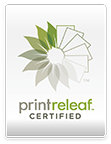
Welcome to week 38! Congratulations! You’re almost there now!
We mentioned last week, to be expectant of birth anytime soon.
The length of your baby, or foetus, from head to heel is about 49.8 cm. Which is said to be about the length of a rhubarb stick.
The 3rd trimester, expectant mothers often experience a range of distinct symptoms. As the body prepares for childbirth, common signs include increased Braxton Hicks contractions, possible boredom and patience will be tested as you will you just want your baby to be born now!
Your baby has reached the “full term” stage of pregnancy, which means they are fully developed and could be born at any moment. The time is exciting as you are on the verge of welcoming your new baby. The term “full term” refers to a point in your pregnancy when the baby is mature enough to survive outside the womb without intensive medical care.
Your journey towards birth will become more exciting as each day passes. Keeping an alert for any signs of labour is important since spontaneous delivery is possible. Maintain close contact with your healthcare provider and prepare your hospital bag in advance.
As your body prepares for birth, you might experience more frequent Braxton Hicks contractions, which are practice contractions and a normal part of the process. These contractions help to soften and thin the cervix. However, it could signify real labour starting if they become regular and more painful.
Your healthcare team will be there to support you and answer any potential concerns, preferences, and questions. A good healthcare team will listen to you and work with you to provide the best possible care for both you and your baby.
Keep a list of important phone numbers handy, including your healthcare provider, hospital, and family members or friends who will be your support during this time.
If you’ve spoken about home birth, here are some tips:
Approximately 1 in 50 women in England deliver their babies at home with the assistance of a midwife.
- Be organised and have everything put aside for the big day, including something to wear in labour, a nursing bra, breast pads, maternity pads and new-baby essentials.
- Plan pain relief with your midwife. You may want a TENS machine, a birthing ball and a birthing pool. You can arrange for your midwife to bring Entonox (gas and air) and pethidine on the day.
- Put aside some towels and waterproof sheets – you’ll need them to soak up the fluids.
- We’ve mentioned above about being prepared with a hospital bag. Even with home births, a top tip is to have a hospital bag on standby. There may be complications and you may need to get to the hospital in a hurry.
Slings and baby carriers are often used instead of prams by parents to keep their babies close.
It is important to know how to use a sling safely, as slings have led to a small number of deaths by suffocation.
A sling that holds your baby upright and solidly against your body is recommended by RoSPA as the safest.
Ensure you can see your baby, that their face is not restricted, and that their airways are always open.
You can keep your baby safe by following the “Ticks” rule:
T – tight
I – in view at all times
C – close enough to kiss
K – keep chin off the chest
S – supported back
If you’re feeling anxious, it’s crucial to get support right away. Discuss your concerns with your partner, family members or a professional. Getting advice and reassurance from a midwife or doctor can be incredibly soothing during stressful periods.
Always turn to a healthcare professional for advice if you’re unsure about anything.
References
NHS |
https://www.nhs.uk/start-for-life/pregnancy/week-by-week-guide-to-pregnancy/3rd-trimester/week-38/



